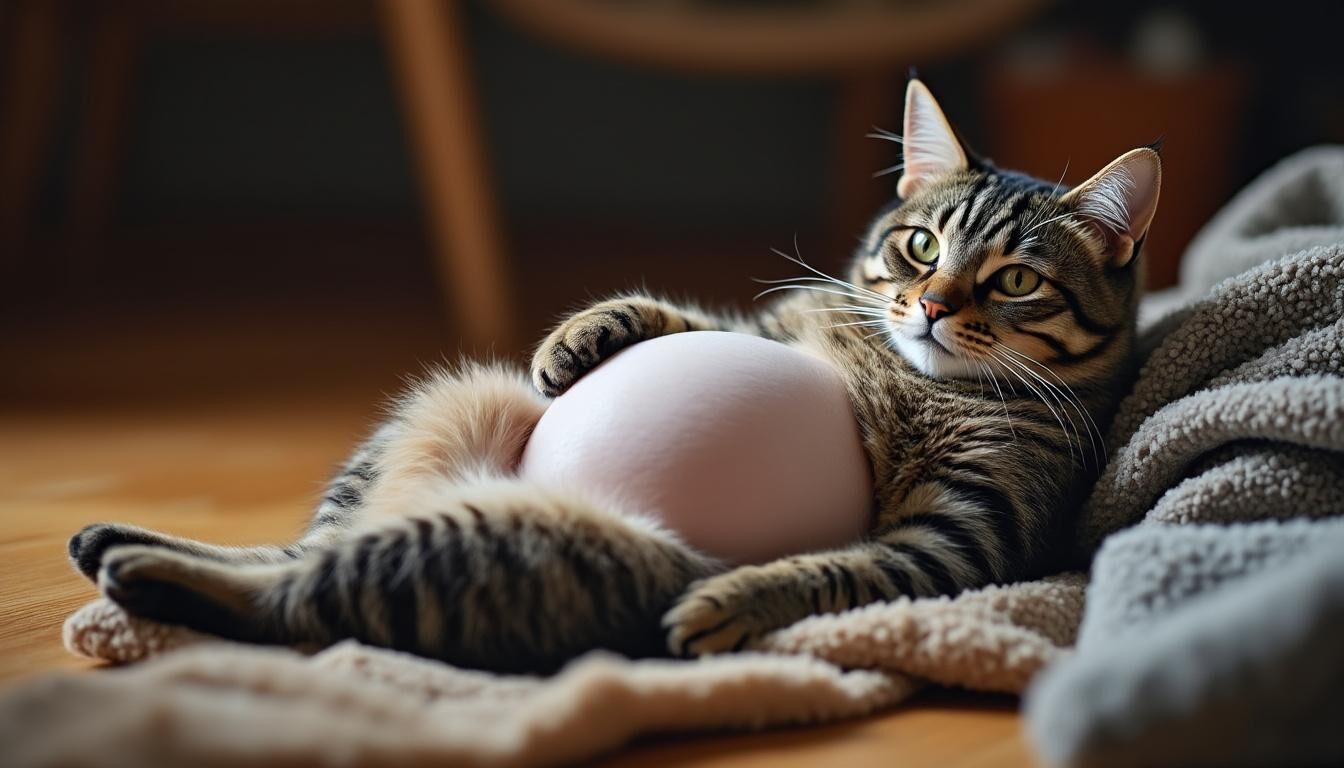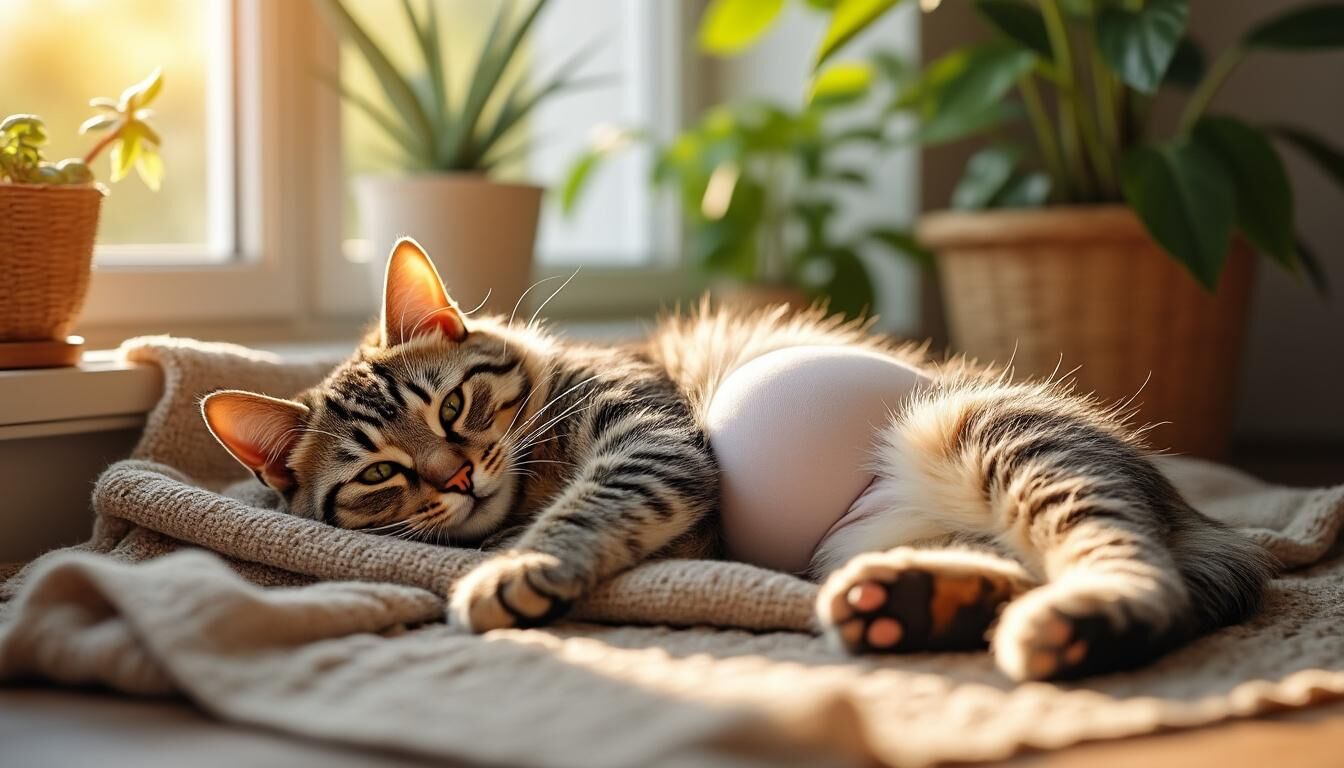The gestation period of cats is a fascinating and often misunderstood process among feline enthusiasts and pet owners alike. Typically lasting between 63 and 67 days (roughly nine weeks), a pregnant cat, known as a queen, undergoes rapid physiological changes to nurture her developing kittens. However, this duration can vary widely—from about 58 to 72 days—depending on several biological and environmental factors.
The speed of feline pregnancy far surpasses that of humans, demanding attentive observation and timely care from owners to ensure the health of both mother and offspring. From early subtle signs like “pinking up” to the dramatic nesting behavior before labor, each phase unlocks compelling insights into feline reproduction, rooted deeply in complex hormonal shifts and biological rhythms.
The rapid pace also means that the mother cat’s diet and environment must be optimized swiftly to keep up with the growing demands of the kittens. Understanding this gestation period equips caregivers to recognize pregnancy early, monitor development throughout each of the three trimesters, and manage the birthing process with confidence, enhancing outcomes for queen and kittens alike.
How Long Are Cats Pregnant? Understanding the Feline Gestation Period
Typical Cat Pregnancy Length: Days, Weeks, and Key Facts
Cats generally have a pregnancy lasting between 63 and 67 days, equivalent to about nine weeks. This period, often called the gestation period, can fluctuate anywhere from 58 up to 72 days depending on the breed, litter size, and health status of the queen. Unlike humans, who have a gestation of approximately 280 days, the shorter duration in cats results in faster fetal development. This means changes often appear within days and require prompt attention from owners.
Several fascinating facts about the feline pregnancy period include:
-
Pregnancy can sometimes be difficult to detect for the first two weeks due to subtle symptoms.
-
Typical queen litters range from 3 to 6 kittens, but larger or smaller litters are not uncommon.
-
Premature or prolonged pregnancies can indicate complications requiring veterinary intervention.
Here’s a quick overview of the duration of feline pregnancy:
|
Gestation Aspect |
Typical Duration |
Range |
Notes |
|---|---|---|---|
|
Gestation period |
63 – 67 days |
58 – 72 days |
Varies by health, breed, litter size |
|
Trimester divisions |
~20 days each |
First, Second, Third trimesters |
Distinct developmental phases for kittens |
|
Average litter size |
4 kittens |
1 – 9+ kittens |
Breed and queen’s health dependent |
Feline Gestation Compared to Humans: Speed and Unique Features
The contrast between feline gestation and human pregnancy is striking. Cats progress from fertilization to birth in less than a third of the time humans do. This accelerated timeline involves several unique features:
-
Rapid embryonic development: Implantation occurs just days after fertilization, with organogenesis beginning in the first trimester.
-
Quick hormonal shifts: These regulate appetite, behavior, and physical changes, occurring with remarkable speed.
-
Nesting behavior: Cats instinctively prepare for labor and birth by creating secluded nests—a behavior uncommon in humans.
This speed means the queen needs immediate adaptations in diet, environment, and care to support the rapidly developing kittens. Human caregivers must therefore be vigilant to provide timely interventions and monitor health closely.
Biological and Physiological Phases of Cat Pregnancy Explained
From Fertilization to Embryonic Development in Cats
Once mating occurs, fertilization happens in the cat’s fallopian tubes within 24 hours. The zygote then travels to the uterus, where the blastocyst implanting process begins about five to seven days after mating. Early embryonic development progresses rapidly.
Key biological phases during early pregnancy include:
-
Day 1-7: Fertilization and zygote formation
-
Day 8-16: Blastocyst implantation in the uterine lining
-
Day 20-30: Formation of major organs and beginnings of kittens’ skeletal structures
The speed of these developments means that subtle changes in the queen’s physiology happen almost immediately after fertilization, although outward signs remain minimal in the first trimester.
Hormonal Changes and Their Impact on Cat Pregnancy
Throughout pregnancy, hormonal fluctuations play a pivotal role in maintaining and supporting fetal growth. The queen experiences significant increases in progesterone, estrogen, and prolactin. These hormones:
-
Maintain the uterine lining for proper implantation and development.
-
Influence the queen’s appetite and metabolism to accommodate growing kittens.
-
Prepare mammary glands for nursing after birth.
Timing and Diagnostic Tools: Ultrasound vs. X-Ray Accuracy
Confirming pregnancy in cats requires precise timing and diagnostic tools. Ultrasound is most effective around days 21 to 28, detecting embryonic sacs and early fetal heartbeats. X-rays, by contrast, become useful after day 42 when the kittens’ skeletons have begun to calcify.
|
Diagnostic Method 🩺 |
Optimal Timing |
What It Detects |
Effectiveness |
|---|---|---|---|
|
Ultrasound |
Day 21–28 |
Embryo presence, fetal heartbeat |
High for early pregnancy detection |
|
X-Ray |
After day 42 |
Fetal skeletons, litter size |
High for litter estimation, not early detection |
Early detection enables tailored care and planning, especially for queens at risk of complications.
Recognizing Cat Pregnancy: Signs, Stages, and Behavioral Clues
Early Signs of Pregnancy in Cats: Pinking Up and Subtle Symptoms
One of the earliest visible signs of pregnancy in a cat is called “pinking up,” where the queen’s nipples become enlarged and take on a vibrant pink hue, typically around days 16 to 21 after conception. This happens due to increased blood flow and hormonal changes preparing the mammary glands for nursing.
Other subtle early symptoms may include:
-
Decreased activity or mild lethargy
-
Appetite changes, occasionally including morning sickness characterized by occasional nausea
-
Slight weight gain or abdominal tenderness
Because cats are naturally stoic, detecting these signs requires patient observation, making it easy to miss the earliest stage of pregnancy.
Physical and Behavioral Changes: Belly Growth, Nesting & Temperament Shifts
As the pregnancy advances into the second trimester, physical changes become more pronounced. The queen’s belly visibly enlarges due to the growing kittens. Concurrent behavioral changes include an increase in nesting behavior, where she seeks out quiet, concealed spaces to prepare for labor. Temperament may shift as well; some cats become more affectionate or alternatively may seek solitude more than usual.
Typical physical and behavioral signs include:
-
Noticeable abdominal expansion and weight gain 🐾
-
Increased grooming, often focusing on the belly and teats
-
Seeking secluded spots or rearranging bedding materials
-
Fluctuations in appetite and activity levels
Cat Pregnancy Milestones: Timeline by Trimester
The pregnancy divides naturally into three roughly equal phases, each bringing unique changes for queen and kittens.
-
First trimester (Day 1-21): Fertilization, implantation, early organ formation, and subtle physiological changes.
-
Second trimester (Day 22-42): Rapid growth of kittens, formation of bones detectable via ultrasound, visible physical changes in the queen.
-
Third trimester (Day 43-63+): Final fetal development, increased kitten movement inside the belly, marked nesting and preparation for birth.
Detecting Kitten Movement and Organ Development
A significant milestone is when the queen starts to show kitten movements, often felt inside the abdomen during the third trimester. By day 50, vital organs and limbs are largely formed, and kittens practice breathing motions in utero.

Factors Affecting Cat Pregnancy Duration and Litter Size
Breed, Age, Health, and Environmental Influences on Gestation Length
Several factors influence the actual duration of a cat’s pregnancy:
-
Breed tendencies: Some breeds like Siamese or Burmese may have shorter or longer gestations.
-
Age of the queen: Younger or older cats may experience longer or less predictable pregnancy lengths.
-
Overall health: Underlying health issues, nutritional status, or stress levels can alter pregnancy length.
-
Environmental conditions: Quiet, stress-free environments support smoother pregnancies; conversely, high-stress conditions may delay delivery.
The Role of Litter Size and Maternal Well-being in Pregnancy Variability
The size of the litter itself has an impact on gestation:
-
Smaller litters may lead to slightly longer pregnancies as fewer fetuses produce fewer hormones stimulating labor.
-
Larger litters often prompt earlier delivery, due to increased physical pressure and hormonal signals.
-
Maternal well-being, including appropriate diet and medical care, can stabilize duration and improve outcomes for both queen and kittens.
Veterinary Monitoring Throughout Pregnancy: Why It Matters
Veterinary checkups throughout pregnancy are vital. These allow early detection of complications such as ectopic pregnancies, infections, or insufficient fetal development. Regular monitoring also assures that queens receive proper vaccinations before pregnancy—since vaccination during pregnancy is generally avoided to protect kitten health—and customized parasite prevention.
Maintaining regular contact with a vet safeguards the health of the queen and her litter, improving chances for a smooth delivery and healthy postpartum period.
Optimal Care for Pregnant Cats: Nutrition, Preparation, and Birth Support
Essential Nutrition for Pregnant Cats: High-Calorie, Protein-Rich Diets
Pregnant cats require a substantial increase in energy and nutrients to support fetal growth. A high-calorie, protein-rich diet is crucial, often using kitten-formulated food due to its balanced nutrient profile. Key nutritional components include:
-
High-quality animal proteins for tissue development 🍗
-
Calcium and phosphorus for bone formation 🦴
-
Folic acid to reduce fetal abnormalities
-
Taurine and omega-3 fatty acids for vision and brain development
Additionally, ensuring the queen has constant access to fresh water and balanced mineral intake supports overall health and optimizes the chances of a successful pregnancy.
Creating a Safe, Comfortable Nesting Environment Before Labor
Preparation for labor means providing the queen with a secluded area where she feels secure and calm. A nesting box should be:
-
Quiet and away from household traffic
-
Warm and draft-free
-
Large enough to accommodate the queen and her expected litter comfortably
-
Equipped with soft, clean bedding material such as towels or blankets
Many cats prefer to arrange their own nesting area, so gentle encouragement without forcing or stressing them is crucial. Introducing the nesting box several weeks prior to the expected birth helps the queen become familiar with the space.
Recognizing Labor Signs and Supporting Natural Delivery
Signs that labor is approaching include:
-
Decrease in appetite
-
Restlessness or pacing
-
Increased vocalization
-
Licking of the genital area
-
Body temperature drops by about 1°F approximately 12-24 hours before delivery
Labor has three stages:
|
Labor Stage |
Duration |
Characteristics |
Care Tips |
|---|---|---|---|
|
Stage 1: Early labor |
6-12 hours |
Mild uterine contractions, nesting behavior intensifies |
Provide quiet, undisturbed environment |
|
Stage 2: Active labor & delivery |
Minutes to several hours |
Strong contractions, active pushing, kittens delivered |
Observe but allow cat to deliver naturally |
|
Stage 3: Placenta expulsion |
Minutes to 20 mins after each kitten |
Passing of the placentas |
Ensure all placentas expelled to avoid infection |
Postpartum Care: Ensuring Mother and Kittens’ Health After Birth
Once the kittens are born, immediate attention turns to postpartum care. The nesting area should be kept clean, dry, and warm, as the newborns cannot regulate their body temperature well. Key postpartum priorities include:
-
Ensuring kittens begin nursing promptly to receive vital colostrum
-
Monitoring the queen for signs of distress, infection, or rejection
-
Maintaining the queen’s hydration and nutritional care
-
Limiting handling of kittens to reduce stress and infection risks 🍼
Common Labor Complications and When to Call a Veterinarian
Although many queens deliver naturally without issues, some complications require immediate veterinary help. Warning signals include:
-
Prolonged contractions > 30 minutes without delivery of a kitten
-
Visible distress or exhaustion of the queen
-
Excessive bleeding or discharge
-
Kitten stuck in the birth canal (dystocia)
Prompt veterinary support is critical to ensure survival of queen and kittens in these situations.
FAQ About Cat Pregnancy Duration and Care
Q1: How soon can a cat get pregnant after spaying?
A: Once properly spayed, the cat will not experience future pregnancies. It’s important to spay cats before they reach reproductive maturity, as queens can become pregnant as early as four months old. Early spaying helps prevent unwanted litters and supports responsible pet ownership.
Q2: Can a cat have multiple litters in one year?
A: Yes, a healthy queen can have up to three litters per year due to the short gestation period and rapid postpartum estrus cycle. However, frequent pregnancies can affect her long-term health.
Q3: When should I take a pregnant cat to the vet?
A: Veterinary visits are recommended early in pregnancy for confirmation and throughout for monitoring. Any signs of distress or unusual symptoms should prompt immediate consultation.
Q4: How can I tell if a pregnant cat is in labor?
A: Look for behavioral changes like restlessness, vocalization, licking genital areas, decreased appetite, and a drop in body temperature. Physical signs include contractions and delivery of kittens.
Q5: What is a safe diet for a pregnant cat?
A: A kitten-formulated diet that is high in protein and calories is ideal along with fresh water. Supplements should only be given under veterinary advice to ensure all fetal needs are met.

